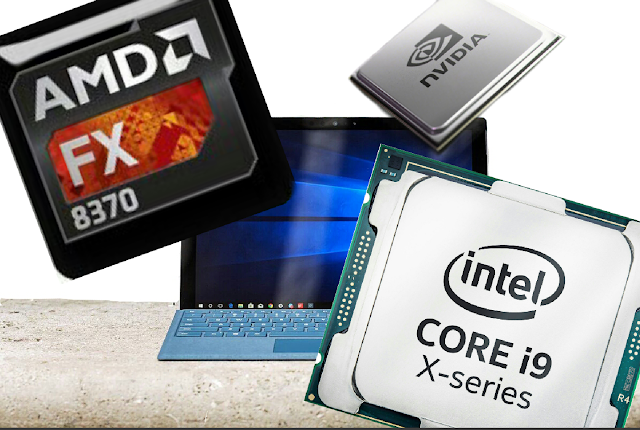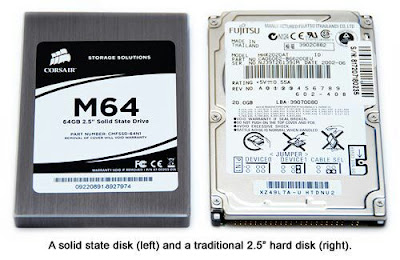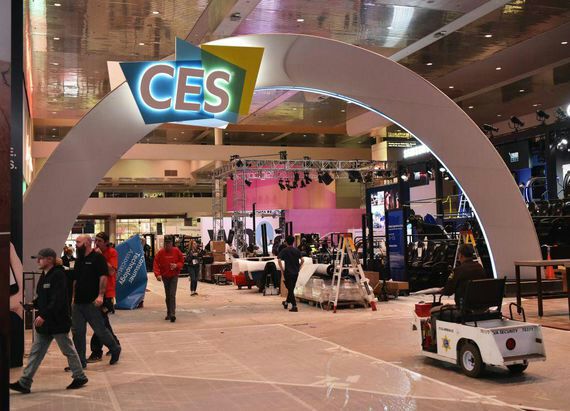If you've ever bought a PC, whether you were just getting your first one or upgrading to a newer version, you probably had to look at a lot of options comparing their individual specifications. This is usually a daunting task and can be frustrating especially if you're not too familiar with the jargon prevalent in tech circles. Sure, you probably know enough to get around like your preferred hard drive size or the the size of RAM you might need or the processor speed but that's about it. Beyond that things get a little more complicated for a lot of people. Hopefully by the end of this article you will have gotten at the very least a somewhat firm grasp of the technical details.
This article isn't intended to explain the finer workings of computers but rather to shed more light on the some of the vague aspects for the average user.
The CPU
The CPU can be described as the brain of the
computer, it is where all the commands from software and hardware are interpreted and excecuted. CPU is an acronym for central processing unit. Other terms such as processor or micro-processor are used to refer to this piece of hardware. In size it measures just a few square-centimetres and can be found on the motherboard of a computer usually right underneath the heatsink because of it's tendency to hear up easily.
Make
The biggest names in the CPU manufacturing industry are AMD and Intel, the latter being the more dominant of the two. The FX-9590 and
Ryzen Threadripper 1950x are both top notch CPUs, all creations of AMD but you might be more farmiliar with Intel's Core i-series processors including the i3, i5, i7 and most recently the i9.
Clock speed
Clock speed, alternatively referred to as clock rate refers to the frequency at which a processor operates and is generally used to indicate a processor's speed. The processor's speed determines how many or calculations it can perform in one second of time. It is usually measured in megahertz (MHz) or gigahertz (GHz). 1 MHz equals a million cycles per second and 1 GHz equals a billion cycles per second. The faster the clock speed, the faster the CPU can excecute instructions. It stands to reason therefore, that a 3 GHz processor is twice as fast as a 1.5GHz processor. This is only true however, for CPUs of the same family. You can’t compare an intel CPU clock rate against another type of CPU, such as an AMD CPU or even an older Intel CPU. Clock rates alone are considered an inaccurate measure of performance when comparing different CPU families as different CPUs implement different architectures and microarchitectures among other factors.
CPU cores
A processor core is a processing unit which reads in instructions to perform specific operations based on those instructions. CPUs can have one or more cores. A multi-core processor is able to run multiple instructions on separate cores at the same time. Dual-core processors have 2 cores while quad-core processors have 4. Personal computer processors can have even 6 or 8 cores. Having multiple cores can improve a processor's performance even if the clock speed remains the same. A 3 GHz dual-core processor for example can perform twice as well as 3 GHz single-core. Processors currently used in almost all personal computers are multi-core.
Memory
Computer memory refers to any physical device capable of storing information temporarily or permanently. There are two types of memory, volatile and non-volatile memory. In the strictest of terms, the word memory is used in reference to the first type of memory i.e volatile memory. Volatile memory or primary memory as it's otherwise known is memory that stores information for immediate use in a computer, it loses its contents when the computer or hardware device loses power . Secondary memory which is used for permanent storage of content is very slow which is why primary memory which is significantly faster is used as an interface between secondary memory and the CPU. The best known type of memory is RAM, other types may include cache memory and virtual memory.
RAM (short for random access memory) also referred to as system memory is considered the fastest storage as it can achieve very high transfer rates of data. When programs or files are accessed, the data is temporarily loaded from secondary memory into the RAM where it is seamlessly accessed by the processor.
Types of RAM
The two most widely used classifications of RAM are SRAM and DRAM.
Static RAM or SRAM is the type of RAM that does not require refreshing in order to remember the content being stored. SRAM is often used used as cache memory for the CPU.
Dynamic RAM (DRAM) on the other hand requires constant refreshing in order to keep content intact. Virtually all memory modules use some form of DRAM. It is the predominant form of computer memory used in modern computers.
Synchronous Dynamic RAM (SDRAM) is a classification of DRAM that operates in sync with the CPU clock, which means that it waits for the clock signal before responding to data input. In order to distinguish it from DDR SDRAM, SDRAM is also known as Single Data Rate Synchronous Dynamic RAM (SDR SDRAM).
Double Data Rate Synchronous Dynamic RAM (DDR SDRAM)
DDR SDRAM operates like SDRAM, only twice as fast. DDR SDRAM is capable of processing twice as many read and write instructions per clock cycle.
DDR2 SDRAM is the upgrade to DDR SDRAM.
DDR2 memory modules have a top clock speed of 533 MHz.
DDR3 SDRAM improves performance over DDR2 SDRAM through advanced signal processing (reliability), greater memory capacity, lower powerconsumption (1.5 V), and higher standard clock speeds (up to 800 Mhz).
DDR4 SDRAM improves performance over DDR3 SDRAM through more advanced signal processing (reliability), even greater memory capacity, even lower power consumption (1.2 V), and higher standard clock speeds (up to 1600 Mhz). DDR4 supports densities up to 16Gb per chip
Memory modules
Memory modules or dual in-line memory modules (DIMMs) are the long, thin, narrow circuit boards onto which RAM chips are attached. Desktops use full size DIMMs while laptops use smaller versions known as small outline DIMMs (SO-DIMMs or SODIMMs). DIMMS and SODIMMs are classified or distinguished by the type of RAM chips they host (they can be DDR, DDR2, DDR3 or DDR4).
There are as many kinds of RAM chips as there are kinds of RAM. In the PC industry the most common RAM chip used is DDR3
Storage
The term storage is typically used to refer to secondary memory. Secondary memory (or long-term storage) unlike primary memory allows information to be saved and recalled for later use. Without a long-term storage device, a computer can not save or remember any settings or information and would be considered a dumb terminal. Long-term Storage media includes disk drives, flash drives, media cards, CDs and DVDs. Personal computers primarily use either a hard disk drive or SSDs.
HDDs
HDDs
Hard disk drives (HDDs) are today the most common means of high capacity computer storage. Traditional, spinning hard disk drives consist of one or more disk "platters" stacked one above the other, and coated in a magnetic media that is written to and read by the drive heads. Hard disk drives can transfer data directly to other computer hardware via a range of three interface types (SATA, IDE/UDMA, or SCSI). They come in a range of speeds from 4200 to 15000 revolutions per minute (RPM). Hard disks are invariably manufactured with either 3.5-inch or 2.5-inch platters . They can have a storage capacity of as much as 10GB.
SSDs
Solid state storage devices store computer data on non-volatile"flash" memory chips rather than by changing the surface properties of a magnetic or optical spinning disk. Unlike hard disk drives, SSDs have no moving parts hence the name "solid-state." SSDs are often very fast indeed with read and write speeds of up to 550MB/s . They are also extremely robust and use very little power. SSDs have a maximum capacity of 4TB in personal computers. It's also worth noting that SSDs are remarkably more expensive than HDDs.
The Screen
Size
Before any other screen metric, you’ll want to decide on asize. Laptop screens have a wide range of sizes depending upon the type of laptop system that you are looking at. Screen sizes are measured diagonally in inches. Notebooks are generally available with screen sizes ranging from 10.6 to 18.4 inches.
Resolution
Every display panel is made up of a series of dots called pixels, and the more pixels you have, the more detail you can fit on-screen. The count of pixels is called display resolution. It’s defined as the number of pixels wide by the number of pixels tall. A 1,920×1,080 display, also known as full HD, has 1,920 pixels spanning horizontally, and 1,080 pixels vertically. This resolution is also called 1080p, the “p” standing for progressive, indicating the number of vertical lines in the display. The lowest resolution generally sold on notebooks today is 1,366×768, also also known as HD or 720p. The highest resolution as at now is 3,840×2,160, or 4K.
Display type
Here, by type I'm referring to what technology is used for the LCD panel. The two basic technologies being used in LCD panels for laptops right now are TN (Twisted Nematic) and IPS (In-Plane Switching).
TN panels are more common than IPS displays as they are the least expensive and also tend to offer faster refresh rates. They do however, have narrower viewing angles and offer less colour overall.
IPS technologies offers better viewing angles and more vibrancy than standard TN panels. They also tend to be more expensive.
Other technologies on the rise are IGZO (Indium Gallium Zinc Oxide) and OLED (Organic Light Emitting Diode). The primary benefits of the IGZO technology is its ability to allow for thinner display panels with lower power consumption. OLED on the other hand is considered most colorful type of screen you can get
Display surfaces
The surfaces of laptop displays range from glossy (reflective) to anti-glare (matte). When turned off a glossy almost as reflective as a mirror but a true anti-glare displays will only show something of a silhouette. Anti-glare displays are a more practical choice if you want to avoid those reflections when using your device.
Gaming
Refresh rate, response time and graphics processors
Most display panels have a refresh rate of 60Hz; that is, they can display 60 individual frames per second (fps). but some high-end gaming laptops come with 120Hz panels, which are better.
Response time is the amount of milliseconds it takes for a pixel to change colors. A good response time for gaming is 5 ms or less. With a low refresh rate or a high response time, your screen may not be able to keep up with fast-paced games, which means you'll see problems like ghosting and tearing.
Some laptops come with Nvidia's G-Sync technology, which limits ghosting and tearing by synchronizing the panel with the video card. AMD has its own synchronization technology called FreeSync.
More and more PC users have been making use of 3D graphics and video acceleration. 3D graphics are mostly used for games while accelerated video is used for other programs such Photoshop or programming software. A dedicated graphics processor tends to be useful in such cases. The dominant suppliers of graphics processors are NVIDIA and AMD (formerly ATI). A good gaming laptop should have at least 1GB of graphics memory.





















